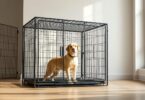What if the true cost of owning a wrinkly-faced companion isn’t just about dollars and cents? While many focus on upfront expenses, responsible pet parenting requires looking beyond the initial sticker shock. This guide breaks down everything you need to create a realistic budget for your future four-legged family member.
Bringing home a new furry friend involves more than adoption fees or breeder costs. From veterinary care to specialized food, expenses add up over time. Factors like your location and the pup’s health history can dramatically influence long-term budgets.
Modern pet ownership costs have evolved significantly compared to previous decades. While adoption centers offer budget-friendly options, reputable breeders often charge $2,000-$3,000 for puppies with documented health screenings. Each choice carries different financial implications worth exploring.
Smart planning helps avoid surprises. This article walks through:
- Upfront purchase vs ongoing care costs
- Regional price variations across the U.S.
- Historical trends affecting current expenses
Arm yourself with knowledge before making this joyful commitment. Your future self – and your pup – will thank you.
Overview of the Bulldog Market
From their roots in medieval England to contemporary living rooms, these sturdy companions carry a legacy shaped by centuries of change. Originally bred for bull-baiting—a practice banned in 1835—their muscular build and tenacity became defining traits. Over time, selective breeding softened their temperament while preserving their iconic wrinkled face and stocky frame.
Historical Background and Breed Origins
The English Bulldog’s transformation from working animal to household pet began in the 19th century. Breeders prioritized companionship over aggression, leading to the affectionate nature we see today. This shift paved the way for variations like the French Bulldog—a compact version favored in Parisian society—and the American Bulldog, which retains more athletic proportions.
Relevance in Today’s Pet Market
Modern enthusiasts often prioritize the breed’s distinctive appearance, with its pushed-in nose and expressive folds. This unique look drives demand across social media and urban communities. Current market dynamics reflect heritage value, with documented lineage often influencing costs. Well-bred puppies typically command higher investments due to health testing and pedigree verification practices.
Key Factors Affecting Bulldog Price
When evaluating your future companion’s value, genetics and aesthetics play pivotal roles. Reputable breeders invest heavily in health screenings and DNA tests, which often translate to higher initial costs but reduce long-term risks.
Genetic Foundations Matter
Documented bloodlines with championship titles can triple standard rates. A 2023 breeder survey revealed pups from OFA-certified parents cost 40% more due to reduced hereditary risks. Prospective owners should request test results for conditions like hip dysplasia and breathing issues.
Visual Appeal Drives Demand
Rare coat colors like blue or lilac command premiums, with some breeders charging $1,500 extra for non-standard hues. However, these shades sometimes correlate with skin sensitivities. Traditional fawn and brindle coats maintain consistent popularity, while exceptional wrinkle patterns add 10-15% to baseline figures.
Quality grooming products become essential for maintaining vibrant coats. Proper care starts early – this puppy care guide details techniques for preserving skin and fur health. Breeders prioritize litters with symmetrical facial folds and glossy coats, traits that signal robust genetics to buyers.
Ethical practices balance aesthetics with wellness. While striking features attract attention, responsible providers never compromise health standards for visual appeal. Always verify veterinary certifications alongside physical attributes.
Breakdown of Initial Purchase and Adoption Costs
The first financial decision new owners face is where to get their puppy. Each option carries distinct upfront expenses and long-term implications. Understanding these differences helps create a realistic budget while prioritizing your pet’s welfare.
Cost Differences: Breeder vs. Adoption
Reputable breeders typically charge $2,000–$3,000 for puppies with health certifications and pedigree documentation. This covers genetic testing, early vaccinations, and microchipping. Adoption fees range from $100–$300 through shelters, often including spaying/neutering and basic veterinary care.
While breeder-sourced pets might seem costly, they often come with warranties against hereditary conditions. Adoption centers provide budget-friendly alternatives, though some bulldog puppies may require additional medical attention. Always request complete health records regardless of your choice.
Essential Puppy Supplies and Set-Up
New owners should budget $400–$500 for starter essentials. A sturdy crate ($80–$150), orthopedic bed ($50–$120), and food bowls ($20–$40) form the foundation. Collars, leashes, and grooming tools add another $60–$100.
Initial vet visits for vaccinations and deworming average $150–$300. These costs apply to both breeder and adoption routes. For broader financial insights, explore this guide comparing expenses across breeds.
Smart planning means allocating funds for unexpected needs. Prioritize quality essentials that support your puppy’s development while keeping receipts for adjustable items like harnesses.
Recurring Monthly Expenses for Bulldog Ownership
Maintaining your companion’s health requires consistent investment beyond the initial setup. Monthly budgets cover essentials that directly impact quality of life—from nutrient-rich meals to skin care routines. Prioritizing these needs helps avoid preventable health issues while strengthening your bond.
Quality Diet and Feeding Costs
High-quality food forms the foundation of wellness. Most owners spend $100–$120 monthly on vet-recommended kibble or fresh meals formulated for sensitive digestion. Look for options with omega fatty acids to support skin health and joint supplements for mobility.
Treats and dental chews add $15–$25 to food costs. Avoid fillers like corn syrup, which can trigger allergies. Proper nutrition reduces risks of obesity and digestive disorders, making every meal a preventive measure.
Grooming and Maintenance Expenses
Professional grooming sessions run $50–$100 monthly for deep cleaning skin folds and nail trimming. At-home care kits with hypoallergenic shampoos and ear wipes cost $20–$40 quarterly. Regular brushing minimizes shedding and detects skin issues early.
Allocating funds for these routines prevents infections and reduces emergency vet visits. Consistent care isn’t just about appearance—it’s a proactive approach to longevity. Budgeting for these needs ensures your dog thrives year after year.
Lifetime Investment in Your Bulldog
A bulldog’s journey with you spans years, each requiring financial foresight. While their affectionate nature brings joy, their unique health needs demand careful planning. Owners often spend $15,000–$18,000 over their pet’s life—a commitment extending far beyond puppyhood.
Projected Medical and Health Expenses
Routine care forms just part of the equation. Annual vet visits average $400–$700, while specialized treatments add up quickly. Breathing issues like brachycephalic syndrome often require $1,200–$3,000 in surgeries. Cataract removal can cost $2,800 per eye.
Emergency expenses surprise many owners. Allergic reactions or hip dysplasia might need urgent care costing $800–$5,000. Setting aside $50 monthly creates a safety net for unexpected bills.
Insurance and Preventive Care Add-Ons
Pet insurance reduces long-term risks. Policies covering hereditary conditions cost $40–$80 monthly, potentially saving thousands over time. Many providers offer wellness plans for $20–$30 extra, covering dental cleanings and vaccinations.
Preventive measures like allergy testing ($200–$300) or joint supplements ($25/month) improve quality of life. These investments help avoid costly treatments later. Smart owners balance insurance coverage with dedicated savings for optimal financial protection.
Regional Price Variations in the United States
Geography plays a surprising role in determining your future companion’s cost. Where you live influences availability, breeder competition, and overall expenses. Urban hubs often see higher demand, while rural areas may offer more budget-friendly options.
Northeast Market Trends
Metropolitan areas like New York City showcase premium pricing. Breeders here often charge $2,500–$4,000 for puppies with health certifications. High living costs and dense populations drive competition, creating a seller’s market. Buyers in Boston or Philadelphia typically pay 15–20% more than national averages.
South, Midwest, and West Price Comparisons
Texas breeders frequently list pups between $1,800–$3,000. The Midwest maintains similar ranges, with Ohio and Michigan averaging $1,700–$2,800. West Coast cities like Los Angeles fall between these extremes at $2,200–$3,500. Rural regions across all zones often have lower costs due to reduced overhead.
Location impacts expenses beyond initial purchases. Urban veterinary services and grooming often cost 10–30% more than suburban counterparts. Savvy shoppers compare multiple breeders within driving distance and search local listings using terms like “bulldog prices” to identify fair deals.
Factors Influencing bulldog price
Trust matters when choosing where to get your future companion. A breeder’s standing in the community often serves as the strongest indicator of quality and long-term value. Ethical practices and documented history create price differences that reflect decades of expertise.
Breeder Reputation and Lineage
Top-tier breeders like Bruiser Bulldogs invest heavily in genetic testing and puppy socialization. Their $3,500+ puppies come with lifetime health guarantees and detailed ancestry reports. These providers prioritize hip evaluations and breathing assessments long before breeding occurs.
Clear lineage documentation adds 25-40% to initial costs but reduces future risks. Buyers receive verified pedigrees showing championship bloodlines and health clearances. This transparency helps avoid hereditary issues that might surface years later.
Less reputable sellers often skip critical health screenings. Puppies from these sources may cost $1,000 less upfront but risk $5,000+ in vet bills. Always request OFA certifications and meet breeding parents to assess living conditions.
Smart shoppers verify credentials through breed clubs and client reviews. Look for breeders who openly discuss their practices and provide post-purchase support. This research ensures you’re investing in a healthy pet, not just paying for a name.
Cost Considerations from Both Breeder and Adoption Perspectives
Choosing between a breeder and adoption involves more than upfront costs—it’s about aligning values with long-term commitments. While breeders typically charge $2,000–$3,000 for puppies with health certifications, adoption fees range from $100–$300. Each path offers distinct advantages for different lifestyles and priorities.
Identifying a Reputable Breeder
Trustworthy breeders provide documentation like genetic health tests and parent lineage records. Look for OFA certifications addressing hip dysplasia and breathing issues. Many offer warranties against hereditary conditions, which can offset higher initial costs. Visit facilities personally to assess cleanliness and animal care standards.
Things to Look for in Adoption
Shelters often include spaying/neutering and vaccinations in their fees. Ask for veterinary records detailing past treatments or existing needs. Some rescue groups specialize in specific breeds, offering puppies with known backgrounds. Always inquire about behavioral assessments to ensure compatibility.
Budget-conscious shoppers might prefer adoption, while those prioritizing predictable health history may lean toward breeders. Research local reviews and consult breed clubs to verify credentials. Either way, focus on transparency and ethical practices to build a foundation for your pet’s well-being.
Health and Veterinary Cost Considerations
Caring for these loyal companions means preparing for both predictable and surprise medical needs. Their distinctive features, while charming, often lead to specific health challenges that require proactive management. Understanding common conditions helps owners budget effectively while prioritizing their pet’s quality of life.
Common Health Concerns
Breathing difficulties rank among the most frequent issues, with corrective surgeries averaging $1,000–$1,200. Skin infections in facial folds cost $200–$400 per treatment cycle. Cataracts affect many older pets, requiring $2,500–$3,800 surgeries per eye. Early diagnosis through regular check-ups can reduce long-term expenses.
Planned Visits and Unexpected Costs
Annual vet exams run $100–$300, covering vaccinations and basic screenings. As pets age, biannual bloodwork ($80–$150) becomes crucial for detecting organ issues. Emergency visits for bloat or allergic reactions often exceed $800–$1,500 per incident.
Setting aside $75 monthly creates a buffer for unexpected bills. Many owners combine pet insurance ($40–$80/month) with dedicated savings accounts. Preventive care investments – like $25/month joint supplements – often offset larger future costs.
Planning involves recognizing how age impacts vulnerability. Dogs over six often need 30% more medical spending annually. Tracking expenses helps adjust budgets while ensuring consistent care through every life stage.
Insurance and Financial Planning for Bulldog Care
Securing your pet’s future starts with smart financial safeguards. Modern solutions help owners manage risks while ensuring access to quality care. Let’s explore tools that protect both your wallet and your companion’s well-being.
Understanding Pet Insurance Options
Comprehensive plans like Spot Pet Insurance cover vaccines, surgeries, and hereditary conditions. Premiums typically range $30–$90 monthly, with higher tiers including microchipping services. Policies often reimburse 70–90% of vet bills after deductibles.
Look for coverage addressing breed-specific needs. Respiratory issues and skin infections common in these pets often qualify. Some providers offer wellness add-ons for routine care, creating an all-in-one safety net.
Benefits of Microchipping and Licensing
A $40–$60 microchip dramatically improves recovery chances if pets get lost. Registration fees ($15–$20 annually) keep contact details current in national databases. Combined with local licensing ($10–$25 yearly), these services provide legal protection and peace of mind.
Preventive care packages save money long-term. Bundling heartworm prevention with dental cleanings cuts costs by 15–20% annually. Many clinics offer discounted rates for insured pets.
Action steps for owners:
- Compare three insurance plans using coverage checklists
- Set up a dedicated savings account for pet emergencies
- Schedule microchipping during spay/neuter appointments
One family avoided $2,300 in surgery costs through timely insurance claims. Another recovered their lost pet within hours thanks to microchip scanning. Strategic planning turns potential crises into manageable situations.
Comparing Costs Across Bulldog Breeds
Not all wrinkly-faced companions come with the same price tag. Understanding cost variations between popular breeds helps future owners make informed decisions aligned with their lifestyle and budget.
English, French, and American Variations
English bulldogs typically range from $1,500–$2,000 due to moderate demand and established breeding programs. French bulldogs command higher figures at $2,500–$4,500, driven by social media popularity and compact size ideal for urban living. American bulldogs offer wider affordability at $800–$3,000, reflecting their working-dog heritage and fewer specialized health requirements.
Breed-Specific Factors Influencing Value
French bulldogs often cost more due to breeding challenges—their narrow hips frequently require artificial insemination. The brindle French Bulldog coat pattern adds 10–15% to baseline prices. English varieties need climate-controlled environments, increasing long-term care expenses. American types generally have fewer breathing issues, reducing lifetime medical costs.
Key considerations when choosing:
- Space requirements (Frenchies adapt well to apartments)
- Grooming needs (English breeds require daily wrinkle care)
- Activity levels (American bulldogs need vigorous exercise)
Prospective owners should evaluate both initial costs and breed-specific care demands. Matching these factors to personal circumstances ensures a joyful partnership for years to come.
Budgeting for Your Bulldog: Hidden Costs and Tips
Owning a wrinkly-faced friend involves more than predictable food and vet bills. Many first-time owners overlook expenses that accumulate quietly over time. Smart planning turns these potential budget-busters into manageable line items.
Strategies for Cost Management
Start by creating an emergency fund. Set aside $50 monthly for unexpected needs like allergy treatments or torn bedding replacements. Apps like Pet Budget simplify tracking through automated savings features.
Professional training often costs $100–$150 per session but prevents destructive behaviors requiring expensive repairs. Group classes ($25–$40 weekly) offer budget-friendly alternatives. One Ohio family reduced chewing incidents by 80% after six weeks of obedience lessons.
Rotate toys and grooming tools quarterly instead of buying new ones. Quality puzzle feeders ($30–$50) last years versus disposable options. Compare boarding facility rates during off-peak seasons – many offer 20% discounts for weekday stays.
Use these steps to build a lifetime care plan:
- Track monthly spending for three months
- Allocate 15% of total to a dedicated pet account
- Review insurance policies annually
Consistent planning helps avoid financial surprises. A Texas owner avoided $2,000 in emergency costs by catching early hip issues during routine vet visits. Small adjustments today create stability for tomorrow’s adventures.
Final Reflections on Investing in Your Bulldog
When considering a loyal companion, have you weighed both the heartwarming moments and the practical commitments? This journey blends financial planning with the irreplaceable joy of shared experiences—a balance every pet parent navigates.
Throughout this guide, we’ve explored the financial realities of caring for a bulldog—from initial setup to lifelong health needs. Thoughtful budgeting and preventive care emerge as pillars of responsible ownership, helping families avoid surprises while prioritizing their dog’s well-being.
The joy these devoted friends bring transcends spreadsheets and vet bills. Countless owners report deepened bonds through daily walks and cozy evenings, proving that the love and companionship shared with a four-legged family member defies monetary value.
Smart planning means matching your lifestyle with your companion’s requirements. Whether choosing adoption or working with breeders, informed decisions create foundations for mutual happiness. Remember: every treat given and checkup scheduled becomes an investment in shared memories.
Prospective owners should approach this commitment with eyes wide open—celebrating the laughter while preparing for challenges. By embracing both the emotional rewards and practical demands, you’ll craft a fulfilling journey for everyone involved.
For those ready to take the next step, connect with veterinary professionals or breed clubs to tailor your plan. Your future pet deserves nothing less than wholehearted dedication paired with wise preparation.
FAQ
How does coat color influence adoption or purchase costs?
Rare coat colors like blue, lilac, or merle often increase costs due to breeding complexity and buyer demand. However, prioritize health certifications over aesthetics when choosing a pet, as unusual colors sometimes correlate with genetic health risks.
What’s the cost difference between adopting and buying from a breeder?
Adoption fees typically range 0–0, covering vaccinations and spay/neuter services. Reputable breeders charge ,500–,000+ for puppies with health-tested lineages. Always verify breeder credentials through organizations like the AKC or BCA to avoid unethical practices.
Are there long-term expenses beyond the initial purchase?
Yes. Expect 0–0 monthly for quality food, grooming, and routine vet care. Lifetime costs often exceed ,000, including allergy management, hip dysplasia treatments, and emergency surgeries common in brachycephalic breeds.
What health issues should owners budget for?
Breathing problems, skin infections, and joint conditions are frequent. Pet insurance like Trupanion or Nationwide helps offset costs, with premiums averaging –/month. Always include dental cleanings and annual check-ups in your financial plan.










Leave a Comment